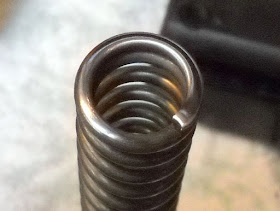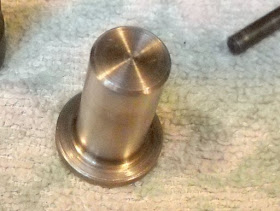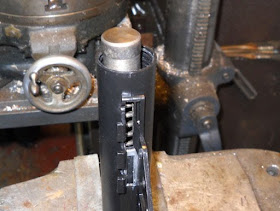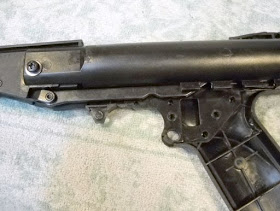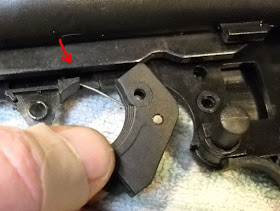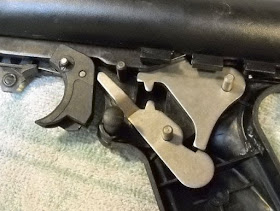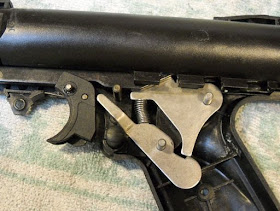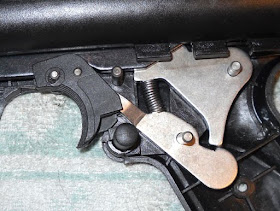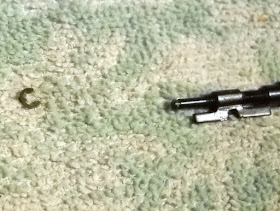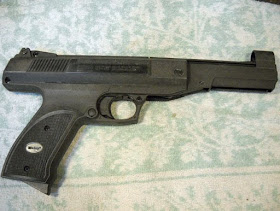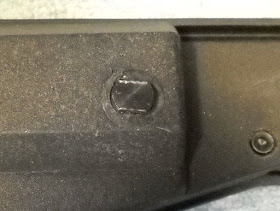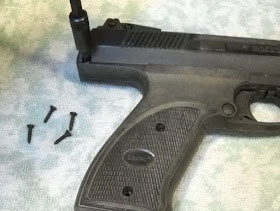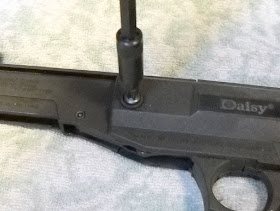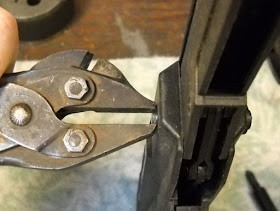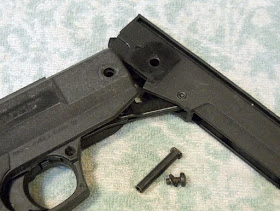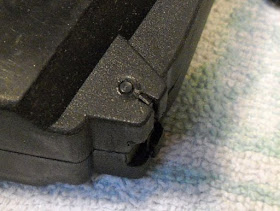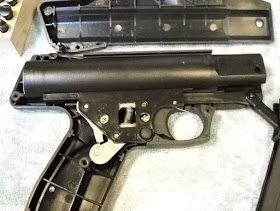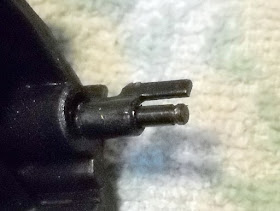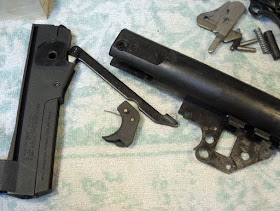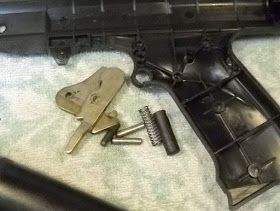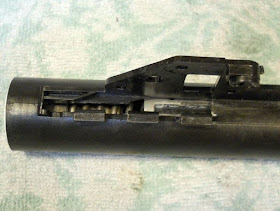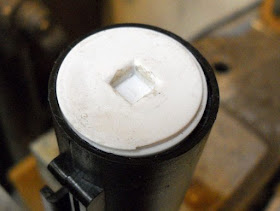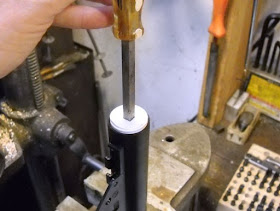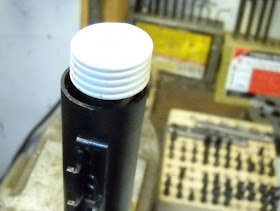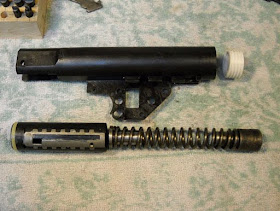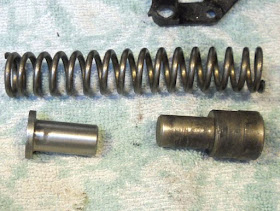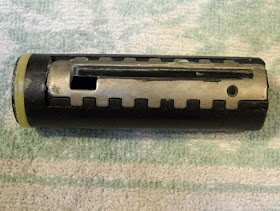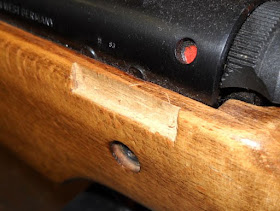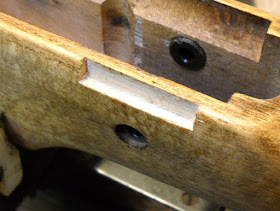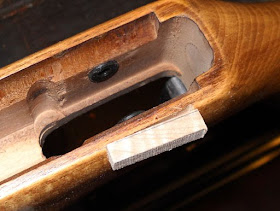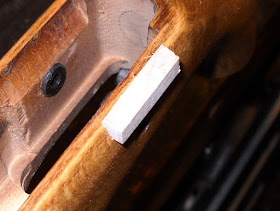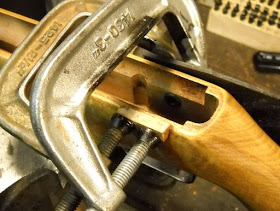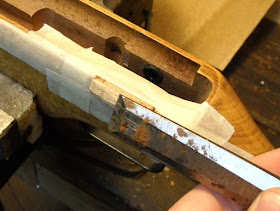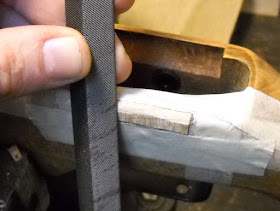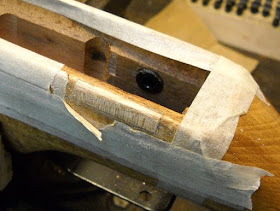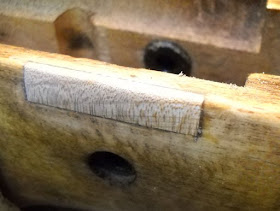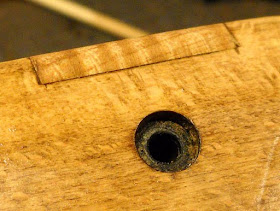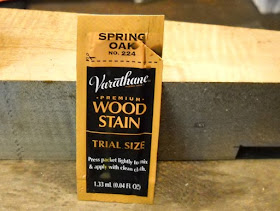Sidebar/Abstract: Anyone else notice (besides me) that I only seem to make asymmetrical grips? I was thinking about that the other day, and I think it's because I only shoot pistols offhand. With all those years shooting National Match courses, single-handed was the only way we were allowed to shoot. From a grip making standpoint, it's easier (in a way) to make asymmetrical grips. It's really difficult to cut 2 separate pieces of wood, inlet, then make each the same dimensionally on the exterior. Far easier to cut each piece slightly (or largely) different to account for the nuances of your shooting hand. The hard part when making asymmetrical grips is getting the halves to look like they belong together. This suddenly comes crashing down to aesthetics--something I mention often because it's important. And it's where I struggle whenever I make a grip or turn a piece of metal. We (I?) want our guns to look as good as they shoot. Well, I'm off topic and all over the place as usual. This stuff is all sort of interrelated anyway, right? OK, focus. My hand isn't symmetric, so why should the grip be? Anyway, that's what I was thinking about. Much of this thought stems from making that
match grip a couple weeks ago. I spent some time looking at various orthopedic grips from companies like
Nill-Griffe, Cesare Morini, and
Rink. Pretty much what I learned was that their combined knowledge of the human hand is absolutely staggering.
Anyway, on with the show:

Sanded the formerly angular thumb rest into a continuous curve that terminates at the heel.

Re-profiled the top of the right grip to better match the left side.

The left side's top was pared down to almost no thickness--and no bulge--to clear my thumb. The right side needed to follow suite in order to match.

Left grip ready for finish sanding.

Took a while to remove all the sanding drum marks. I started with 100 grit garnet paper and worked my way up to 320. Did the same to the right side grip. Kept the grips flat on a piece of granite so as to not sand angles at the base.

Final fitting and ready for a finish. They're a bit longer at the top than the stock Crosman 600 grips. The threaded bushing and pin holes from
Part 1 made for a no-wiggle fit.

Went with 3 coats of Minwax cherry followed by 3 coats of Minwax polyurathane. Synthetic steel-wooled between coats of poly. Essentially, I used the poly as a grain filler.

A couple (like three) coats of Minwax paste wax and I called it good. The right grip is pretty plane jane--just like the original.

A view from the rear shows how the curves match from left to right. This is what I was blabbering on about up in the first paragraph. I was having trouble bringing the grips together into a set. Each grip looked fine individually, they just didn't look like brothers. The key was reworking the swell at the heel on each side and playing with the curves a bit more. I tried to keep the thickness consistent from top to bottom on each side.


The guys at the hardware store said they never sell paste wax anymore. The old price on the can bears that out. It was about $3 less than current cost. I like the idea that I was using a finish my grandfather would be familiar with.

Excuse the barrel length. I had
Ron Sauls at B&A cut down one of his extended gas tubes by about three and a half inches. I've not yet made a barrel to fit. I'm considering a few options to extend the muzzle.

Can't get the camera to convey all the curves.


The front of the left grip is concave then it blends into a convex curve near the midpoint.
These were supposed to be quick and easy. The big time hurdle was the thickness difference between the left and right sides. I started with a 1/2" board. The thumb rest easily adds 9/64" in thickness to the left side. If I make another set, I'll plane down the right grip by that amount and save a boatload of sanding time.
